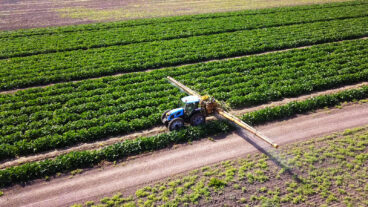Young residents of Sansana, the first community in the Negev established by the OR movement.
Inspired by powerful slogans like “Go West, young man”, and persuaded by government land-incentives and free open spaces, young American pioneers set out by the thousands in the 1800s towards the western United States.
That Manifest Destiny movement was revolutionary in setting up the framework for the transformation of America into the global superpower of the 20th century. Today, resembling the American spirit of the 19th century, new waves of Israeli “settlers” are striving to do the same for an under developed area of the country in dire need of expansion – the Negev.
“Go south young man!” is the catchphrase of Roni Flamer, the head of the OR Movement, a non-profit organization seeking to settle and develop the arid lands of the southern Negev desert.
Flamer’s playful allusion is befitting. The Negev constitutes 66% of Israeli territory and currently houses only a mere 8% of Israel’s population. With Israel’s population still growing at a fast clip, he believes the Negev is the final frontier.
“The dream of developing the land of Israel is far from over,” Flamer told ISRAEL21c. “This is the Zionism for the 21st century.”
And he’s not the only one to think like that. “The Negev has begun to awaken,” declared President Shimon Peres – an ardent proponent for the development of the Negev – in his inaugural address last summer, “and it must never be allowed to sleep again.”
If Flamer has his way, the Negev will be wide awake from now on. His journey began in his youth, growing up in Petah Tikva with “very nationalist and Zionist parents”. Together with three friends, he dreamed of making a contribution to the country. Not satisfied with the apparent dwindling of Zionist fervor within his generation, Roni ardently believed that the country needed to usher in a new movement.
“We needed more light in Israel,” he said.
So following his graduation from Bar-Ilan University, Flamer and his like-minded friends founded the OR movement, (light in Hebrew), in 1999. Initially settling their caravans in an area close to Beersheva, they quickly established a stable community which they named Sansana. Today, Sansana is home to 53 families and is expected to grow to 200 families in the next 5-10 years.
In partnership with the Jewish National Fund (JNF), OR has established four other new communities in the Negev – Givor Bar, Be’er Milka, Merchav-Am and Charuv – and has assisted in the expansion of existing population centers. Over the next five years, Flamer predicts that OR will relocate 26,750 families to the Negev.
OR’s role in settling these families in the Negev, Flamer explains, is three-pronged. “We work with housing, education and employment to ensure a greater quality of life for our incoming families,” he says.
Currently, there are 13,000 families on OR’s waiting list, until housing becomes available. Flamer believes that through economic, educational, and cultural development, the Negev will cease to be seen as a periphery of Israel. His long term goal is to settle 500,000 people in the Negev.
Flamer strongly believes that if the volition to expand settlements into the Negev can be infused into the Israeli consciousness, large-scale development and growth will be possible. Given that more than 70% of Israelis currently live within the overcrowded triangle of Haifa-Tel Aviv-Jerusalem and real estate prices are rapidly increasing, the Negev is looking more attractive all the time.
But making the Negev blossom, however, will not be easy. At least not as easy as it was to cultivate the fertile North American western-expanse. Categorized by an arid to semi-arid climate, the Negev is no “land of milk and honey.” Its poor conditions had Mark Twain describe it in his book The Innocents Abroad as “a desolation that not even imagination can grace with the pomp of life and action…”
But no less a visionary than Israel’s first Prime Minister David Ben-Gurion understood that the Negev would be the challenge of the Israeli people, saying “It is in the Negev that the creativity and pioneer vigor of Israel shall be tested.”
Today, more than 50 years after Ben-Gurion’s challenge, Israelis like Framer are putting down the gauntlet with full momentum. And the government has taken notice and is following suit too.
In 2006, it invested $4 billion for developing the Negev. Some communities are also giving residents free land in addition to the tax benefits that are offered to residents of certain parts of the Negev.
Since OR got involved, private as well as public investment has spiked. “Today you can find more roads, pubs, companies, schools and roads in the Negev,” he says.
But that’s just the start. Framer has ambitious plans to build a river-walk near Beersheva that will be a center of entertainment, similar to the one built in San Antonio, Texas.
According to Framer, moving to the Negev is a chance for Israelis to reinvent their own as well as the country’s identity.
“Here you can fulfill yourself and be part of a community life. Here you don’t watch reality transform itself, you transform reality.”![]()












